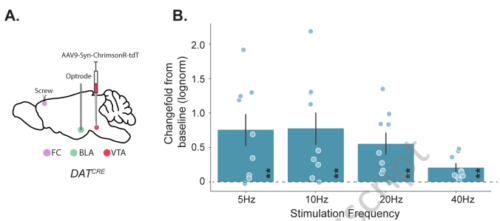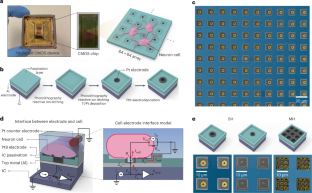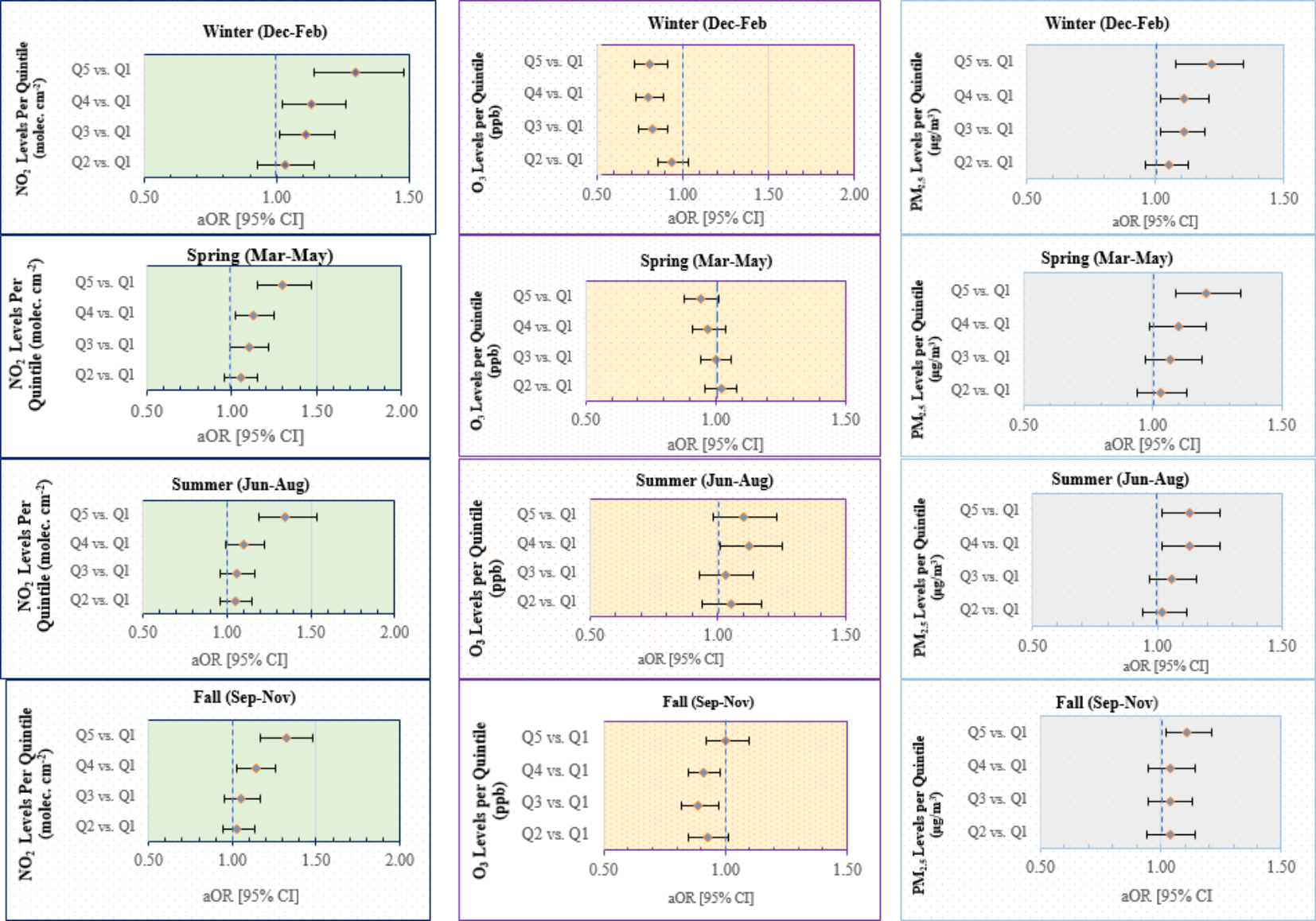2025-02-13 タフツ大学
<関連情報>
- https://now.tufts.edu/2025/02/13/tufts-researchers-discover-how-experiences-influence-future-behavior
- https://www.jneurosci.org/content/early/2025/01/29/JNEUROSCI.0088-24.2025
- https://www.cell.com/cell-reports/fulltext/S2211-1247(24)00818-0
- https://www.cell.com/current-biology/abstract/S0960-9822(24)00216-1
生後早期のストレスはBLAネットワークと行動状態のVTA協調を損なう Early life stress impairs VTA coordination of BLA network and behavioral states.
Bradly T. Stone, Pantelis Antonoudiou, Eric Teboul, Garrett Scarpa, Grant Weiss and Jamie L. Maguire
Journal of Neuroscience Published:13 February 2025
DOI:https://doi.org/10.1523/JNEUROSCI.0088-24.2025

Abstract
Motivated behaviors, such as social interactions, are governed by the interplay between mesocorticolimbic structures, such as the ventral tegmental area (VTA), basolateral amygdala (BLA), and medial prefrontal cortex (mPFC). Adverse childhood experiences and early life stress (ELS) can impact these networks and behaviors, which is associated with increased risk for psychiatric illnesses. While it is known that the VTA projects to both the BLA and mPFC, the influence of these inputs on local network activity which govern behavioral states – and whether ELS impacts VTA-mediated network communication – remains unknown. Our study demonstrates that VTA inputs influence BLA oscillations and entrainment of mPFC activity in mice, and that ELS weakens the ability of the VTA to coordinate BLA network states, while also impairing dopaminergic signaling between VTA and BLA. Optogenetic stimulation of VTABLA terminals decreased social interaction in ELS mice, which can be recapitulated in control mice by inhibiting VTA-BLA communication. These data suggest that ELS impacts social reward via the VTA-BLA dopamine network.
Significance Statement It is well established that oscillatory states in the basolateral amygdala (BLA) govern behavioral states. However, a gap in our knowledge exists regarding the mechanisms mediating transitions between BLA network states. Here we demonstrate a novel mechanism modulating BLA network states involving dopamine inputs from the VTA. Further, we demonstrate that early life stress, a major risk factor for psychiatric illnesses, impairs the ability of dopaminergic inputs from the VTA to coordinate BLA and mPFC network states. Thus, this study provides a novel mechanism mediating transitions between oscillatory states in the BLA which are well documented to govern behavioral states and demonstrates pathological perturbations in the ability of the VTA to coordinate BLA network states following early life stress.
基底外側扁桃体を介した経験に依存した情報ルーティングが行動結果を形成する Experience-dependent information routing through the basolateral amygdala shapes behavioral outcomes
Pantelis Antonoudiou∙ Bradly T. Stone∙ Phillip L.W. Colmers∙ … ∙ Najah L. Walton∙ Grant L. Weiss∙ Jamie Maguire
Cell Reports Published:July 9, 2024
DOI:https://doi.org/10.1016/j.celrep.2024.114489
Graphical abstract
Highlights
•Previous experiences alter electrophysiological properties of principal neurons in the BLA
•Previous experiences differentially alter the activity of projection-specific BLA neurons
•Chemogenetic biasing of information flow through the BLA bidirectionally impacts behavior
•Previous experiences bias information routing through the BLA to drive divergent behaviors
Summary
It is well established that the basolateral amygdala (BLA) is an emotional processing hub that governs a diverse repertoire of behaviors. Selective engagement of a heterogeneous cell population in the BLA is thought to contribute to this flexibility in behavioral outcomes. However, whether this process is impacted by previous experiences that influence emotional processing remains unclear. Here we demonstrate that previous positive (enriched environment [EE]) or negative (chronic unpredictable stress [CUS]) experiences differentially influence the activity of populations of BLA principal neurons projecting to either the nucleus accumbens core or bed nucleus of the stria terminalis. Chemogenetic manipulation of these projection-specific neurons can mimic or occlude the effects of CUS and EE on behavioral outcomes to bidirectionally control avoidance behaviors and stress-induced helplessness. These data demonstrate that previous experiences influence the responsiveness of projection-specific BLA principal neurons, biasing information routing through the BLA, to drive divergent behavioral outcomes.
扁桃体基底外側パルバルブミン介在ニューロンが報酬行動を駆動するために振動を調整する Basolateral amygdala parvalbumin interneurons coordinate oscillations to drive reward behaviors
Kenneth A. Amaya∙ Eric Teboul ∙ Grant L. Weiss ∙ Pantelis Antonoudiou ∙ Jamie L. Maguire
Current Biology Published:March 12, 2024
DOI:https://doi.org/10.1016/j.cub.2024.02.041
Highlights
•Oscillations in the basolateral amygdala (BLA) can be related to behavior
•Reward learning in the BLA is associated with elevated beta power (15–30 Hz)
•Parvalbumin interneurons can dictate oscillatory state and alter behavior
•We conclude that BLA microcircuitry and oscillations are vital to reward seeking
Summary
The basolateral amygdala (BLA) mediates both fear and reward learning. Previous work has shown that parvalbumin (PV) interneurons in the BLA contribute to BLA oscillatory states integral to fear expression. However, despite it being critical to our understanding of reward behaviors, it is unknown whether BLA oscillatory states and PV interneurons similarly contribute to reward processing. Local field potentials in the BLA were collected as male and female mice consumed sucrose reward, where prominent changes in the beta band (15–30 Hz) emerged with reward experience. During consumption of one water bottle during a two-water-bottle choice test, rhythmic optogenetic stimulation of BLA PVs produced a robust bottle preference, showing that PVs can sufficiently drive reward seeking. Finally, to demonstrate that PV activity is necessary for reward value use, PVs were chemogenetically inhibited following outcome devaluation, rendering mice incapable of using updated reward representations to guide their behavior. Taken together, these experiments provide novel information about the physiological signatures of reward while highlighting BLA PV interneuron contributions to behaviors that are BLA dependent. This work builds upon established knowledge of PV involvement in fear expression and provides evidence that PV orchestration of unique BLA network states is involved in both learning types.



